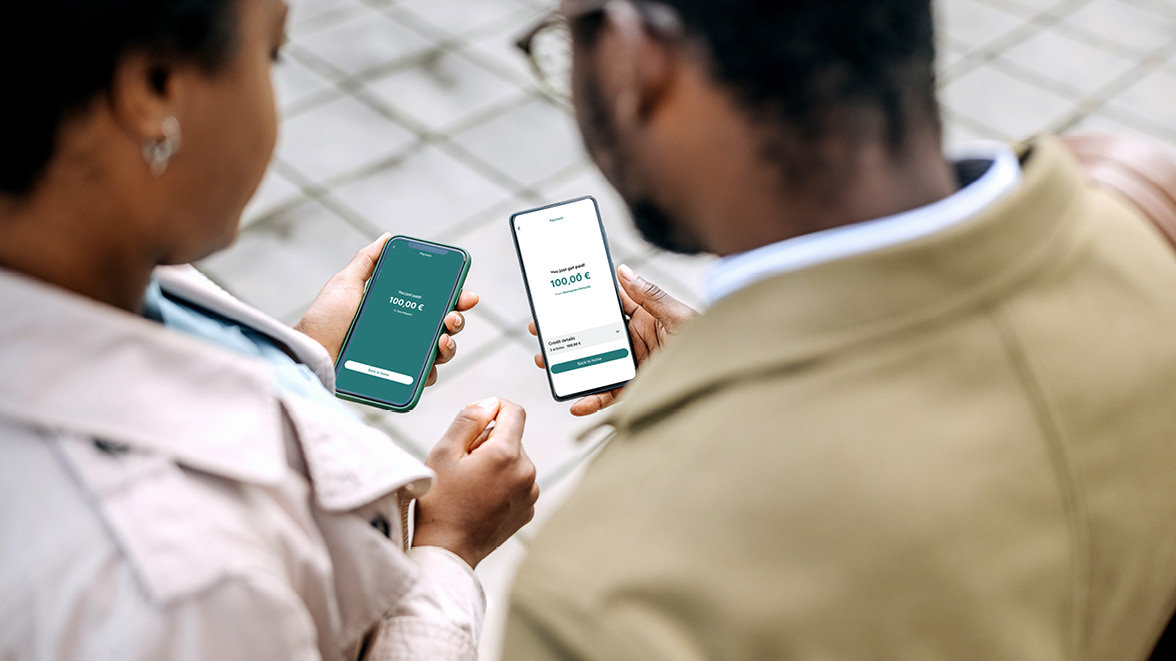Exploring the future of money: is it digital and instant?
19 / 09 / 2023
Digitalisation is changing the way we pay. Consumers and businesses are migrating from cash and checks towards electronic and digital payments, including card payments, electronic fund transfers and e-money payments. There’s a rapidly growing use of contactless and fast payment systems. And central banks worldwide are now exploring issuing their own digital currencies. At Sibos, in a session addressing this topic, the question of whether the future of money truly is digital and instant sparked a far-reaching discussion, shedding light on some of the demands of today’s society, and the challenges in meeting them.

Gone digital
The digital revolution has introduced new forms of account-based payments, mobile wallets, crypto currencies, stable coins and, with them, new ways to send and receive money. Furthermore, central banks across the globe are exploring the concept of Central Bank Digital Currencies (CBDCs). These are expected to offer benefits like increased efficiency, reduced transaction costs, and enhanced financial inclusion. Unlike crypto currencies, CBDCs are centralised and inherently come with greater governmental control.
Digital currencies stand alongside traditional payment forms. One game-changer has been the evolution of customer needs and expectations. As society, and business, gets increased access to more integrated and efficient technology, their dependency and expectations also increase. How far can 'digital' go, and how can banks and payment providers meet their customers' current and future expectations?
Instant gratification
The concept of instant transactions has gained momentum alongside the digital revolution. Traditional financial transactions, such as wire transfers and credit card payments, can take several hours or days to process. However, advancements in financial technology have paved the way for real-time payments and instant settlements.
Device-integrated services like Apple Pay, Google Pay, and various mobile wallets enable users to make payments with a simple tap. This immediacy has reshaped consumer expectations of convenience. We see emerging digital wallets that have already demonstrated their potential for growth nationally. Take, for example, India or Brazil, where UPI and PIX are part of consumers’ everyday lives and have quickly reached the level beyond card payments. [1] But adoption of real-time payments varies across countries, also depending on the starting point. For instance, India started with a ‘blank canvas’, while countries such as the UK had existing infrastructure for card payments and digital transactions.
In a poll during the Sibos session, around half of attendees indicated a belief that more than 50% of payments will be instant within the next five years.
Panellist Sameer Shukla from the Government of India indicated: “Not everything will be digital and instant. Some payments will be digital, but not instant, while some will be instant, but not digital. It’s important to note that cash also continues to have a function – it all depends on use cases.”
In the corporate payment domain some panel members argued that it might be even useful to add friction, due to requirements for effective security and fraud prevention. This was echoed by panellist Mark Bryant, from Natwest, who stated that: “Organisations such as PayPal and traditional banks have spent a lot of time and investment into learning how to use the data and detect patterns, and when to put appropriate holds in place. There’s a need for appropriate pauses in the journey. This creates frustration for some customers, but there's a necessary need for this. Especially in large value transactions, and large corporate transactions.”
Benefitting the entire value chain
Digital, instant payments offer several benefits for the entire value chain. These include enhanced customer convenience, reduced costs for consumers and businesses, improved transaction security and broader financial inclusion. Additionally, digital currencies have the potential to streamline cross-border payments, strengthening cross-border commerce.
From banks to consumers and businesses, optimised payments and an increase in the ways to pay result in more diverse businesses, ultimately benefitting from an economic, financial and customer experience point of view. Globally, cash continues to be an important payment method. However, as digitalisation continues, so will access to various forms of digital currencies and their associated infrastructure.
A European perspective: the success of instant payments in the Netherlands
The success factors of the widespread adoption and use of instant payments across Europe, include an equal cost for all account-to-account payments. This means: instant payments offered at no extra charge, a measure that is also outlined as part of the legislation for mandatory instant payments from the European Commission.
Offered by default to payment initiators of single transfers, instant payments ramped up quickly since 2019 in the Netherlands. Worldline is proud to have played a key role in this successful implementation. Compared to the European Payment Council (EPC) scheme standard of ten seconds, the processing of Dutch instant transfers within five seconds also proved advantageous, requiring a modernised, future-proof payments infrastructure. The Netherlands also has no maximum amount limits for its instant transactions, promoting the use on a larger scale in the B2B sector.
Worldline: a digital facilitator
Worldline is convinced that, ultimately, we will move towards a global Instant Payments world. Just as we use the internet to search for information and want to receive it instantly, future payment methods will also be instant and digital, regardless of location, currency type or time or date.
Worldline recognises that navigating the digital and instant payments world can be daunting for businesses and banks, especially when resources are stretched. As a global leader in payment solutions and services, Worldline supports its customers with optimised instant payment solutions through three distinct models, each designed to meet differing needs, Worldline empowers businesses and banks to embrace the benefits of digital currencies and instant payments without shouldering the investment or draining strategic resources.
Worldline’s back-office, cloud or software models provide end-to-end solutions that facilitate faster, more diverse payments.
Thriving in the digital economy
As technology advances and consumer preferences shift, the future of money seems to be rooted in the realm of digital and instant transactions. At Worldline, we think that adapting to new forms of digital payment and embracing the advantages they offer, will be essential to thriving in the digital economy. A final session poll asked the question of what would be the biggest driver for cross-border and digital payments. Almost overwhelmingly, attendees voted that regulation would play the biggest role moving forward, while panellists suggested that market-demand should be higher on the list. Clearly, the answer remains subjective, much like payment preferences. All panellists did agree that collaboration will be key to driving future market developments, and improving the experience and long-term success of truly instant payments. On Worldline’s side, we embrace the transformation and challenge, and are looking forward to all challenges and opportunities that the future will bring.
Learn more about Worldline instant payments.
References
[1] Number of transactions vs other payment means. Sources: RBI, 2023 estimate based on Jan-May 2023 growth vs Jan-May 2022, Banco do Brazil, 2023 estimate based on Jan-May 2023 growth vs Jan-May 2022.

Edward van Dooren
Related posts
-

-

-
Consumer Finance: The Transformative Impact of Open Banking & Open Finance
Learn more -

Elevating Service Efficiency: Boscolo Hôtels & SPAS Group's transformation with Worldline’s Integrated Payment Systems.
-
Will augmented reality transform how we shop? | Podcast
-

-
Worldline launches “Bank Transfer by Worldline”, a new account-to-account payment method in 14 European countries by end of 2024
Learn more -
Learn how NFC payments empower your business











